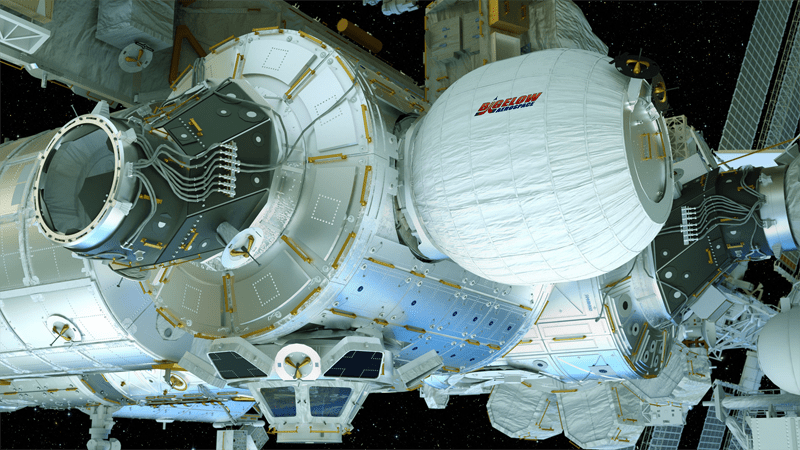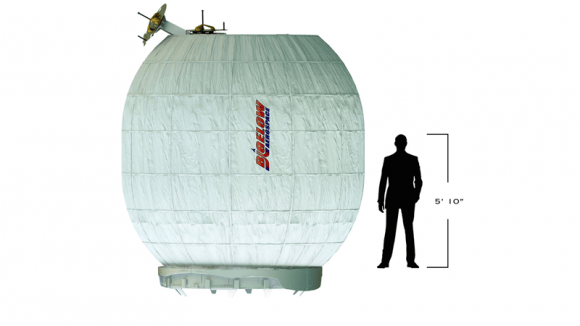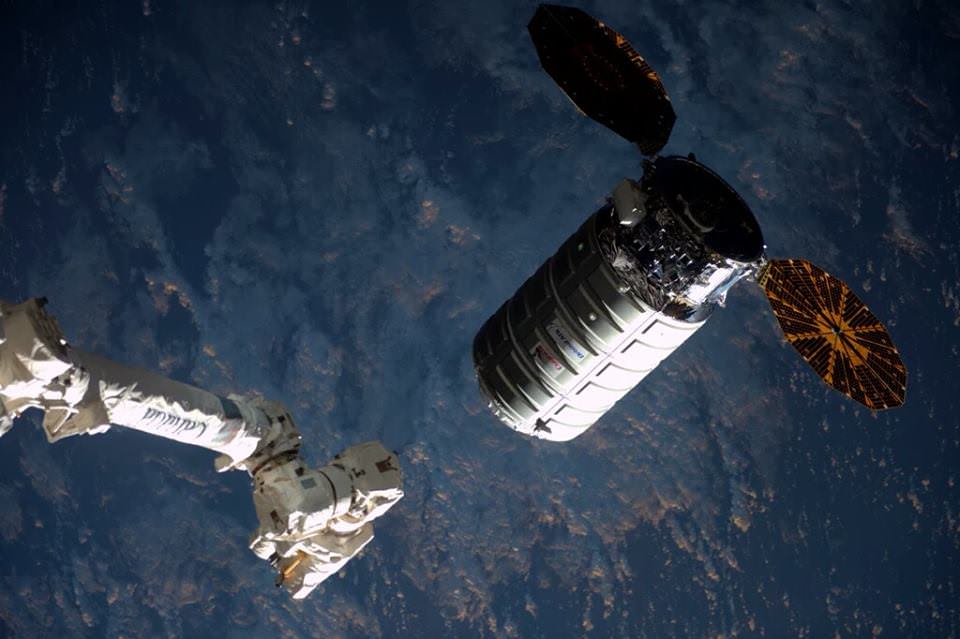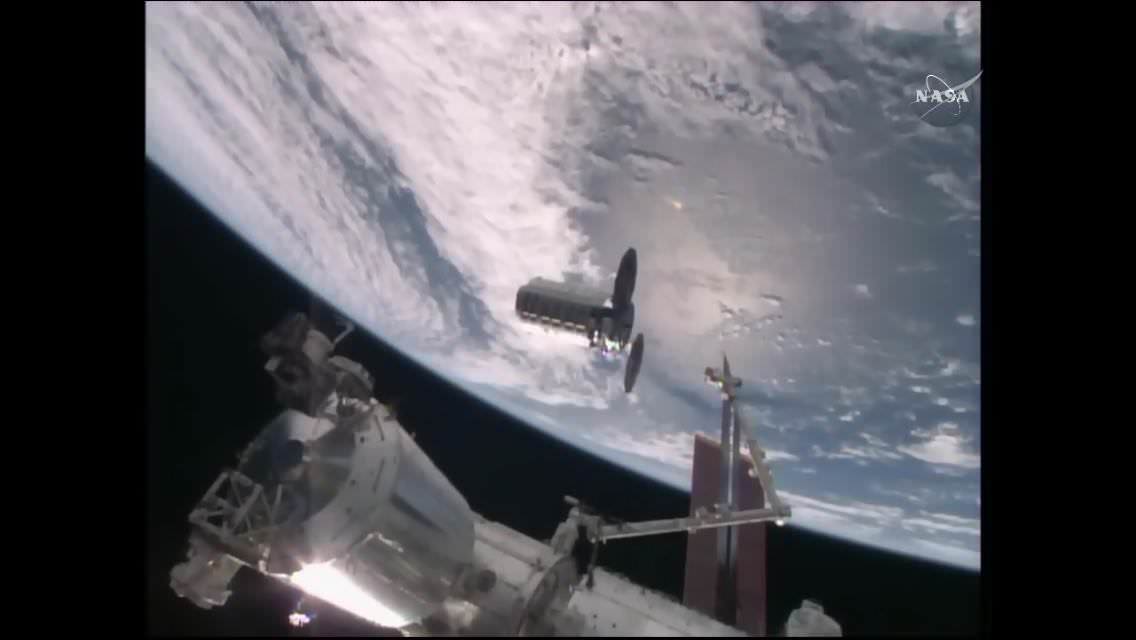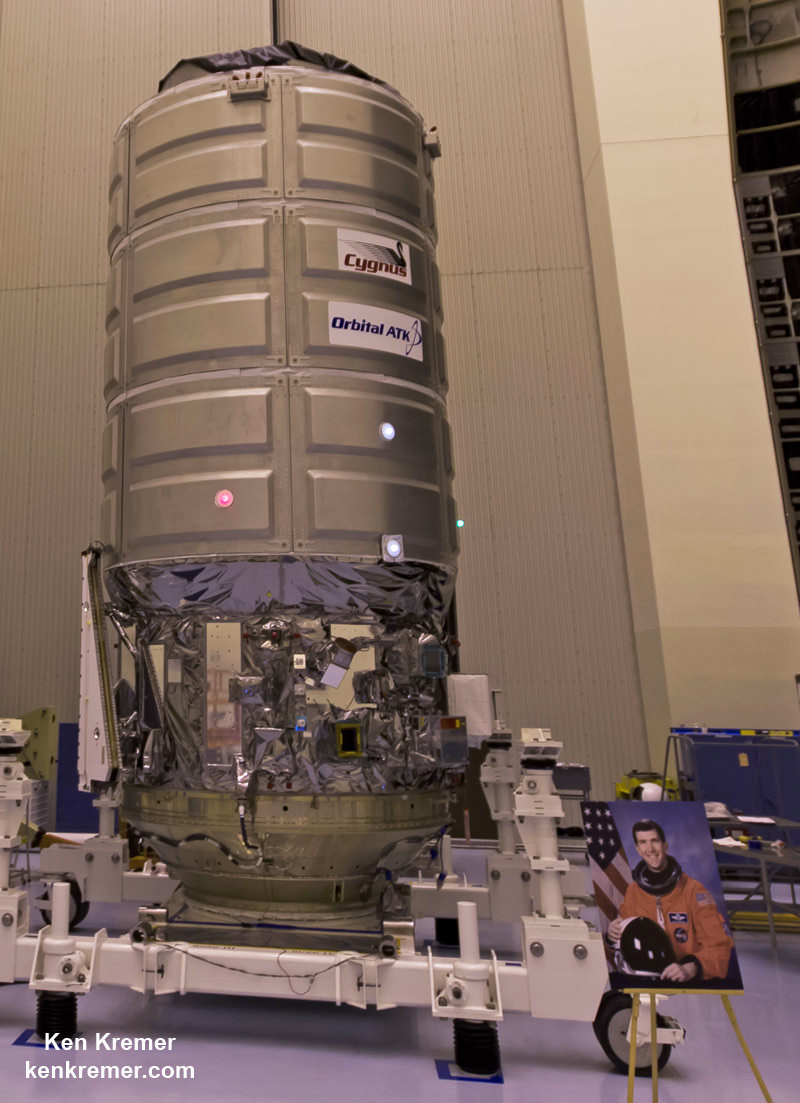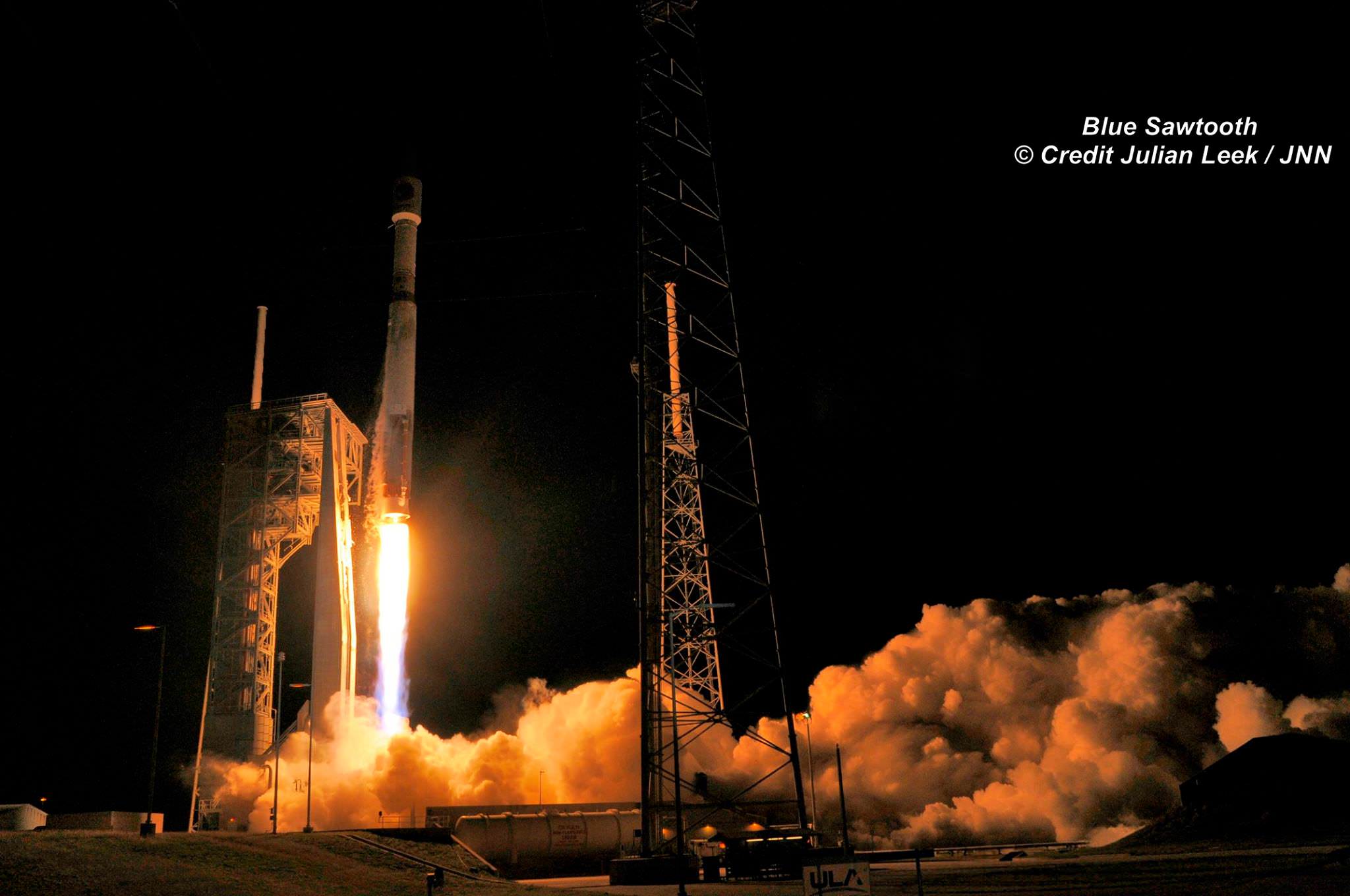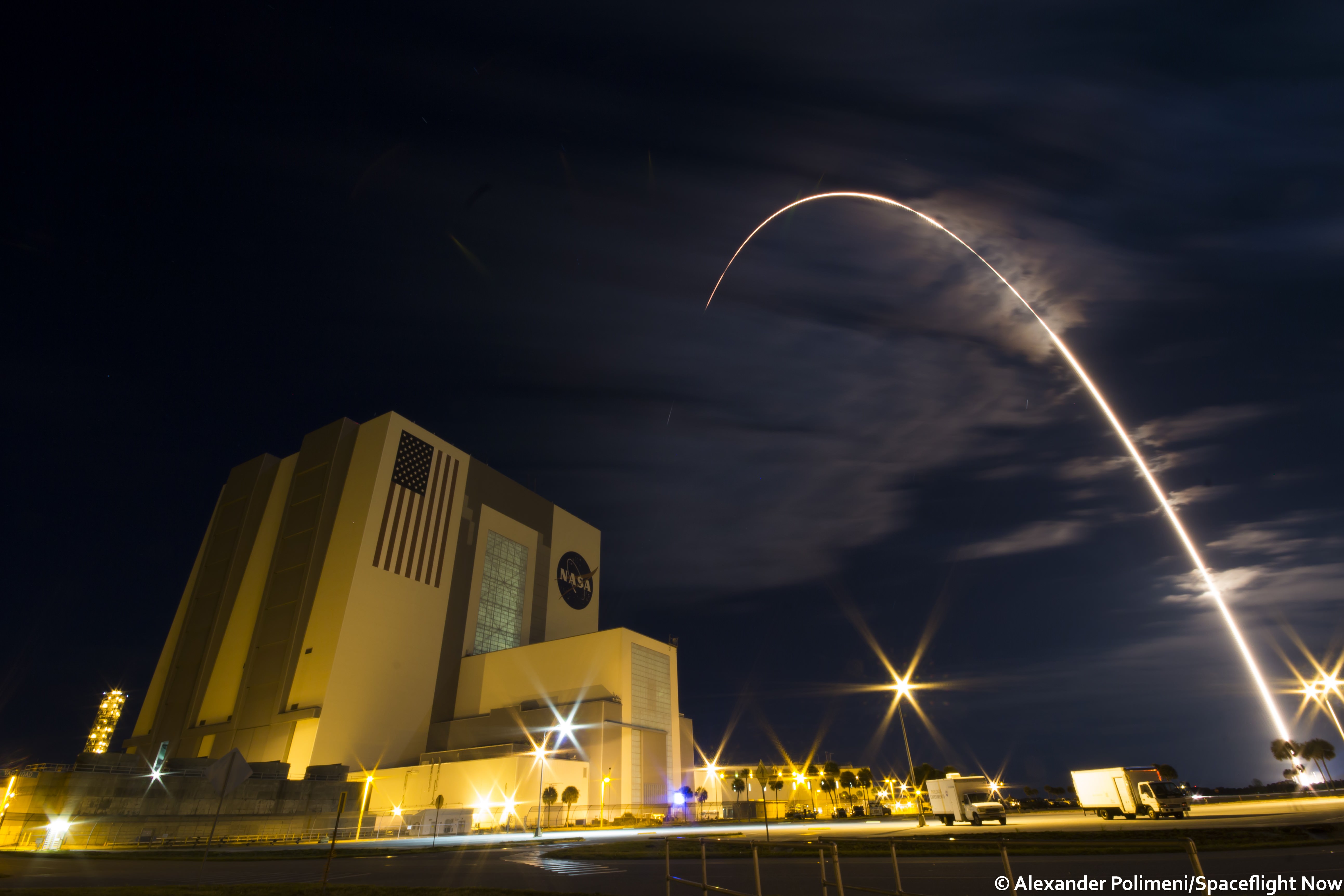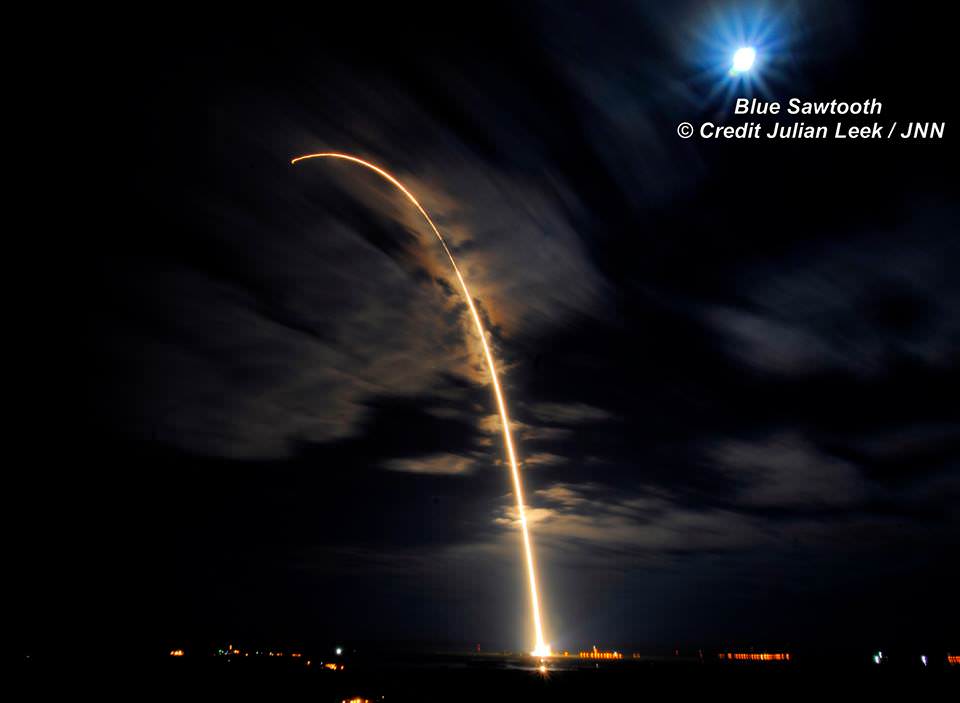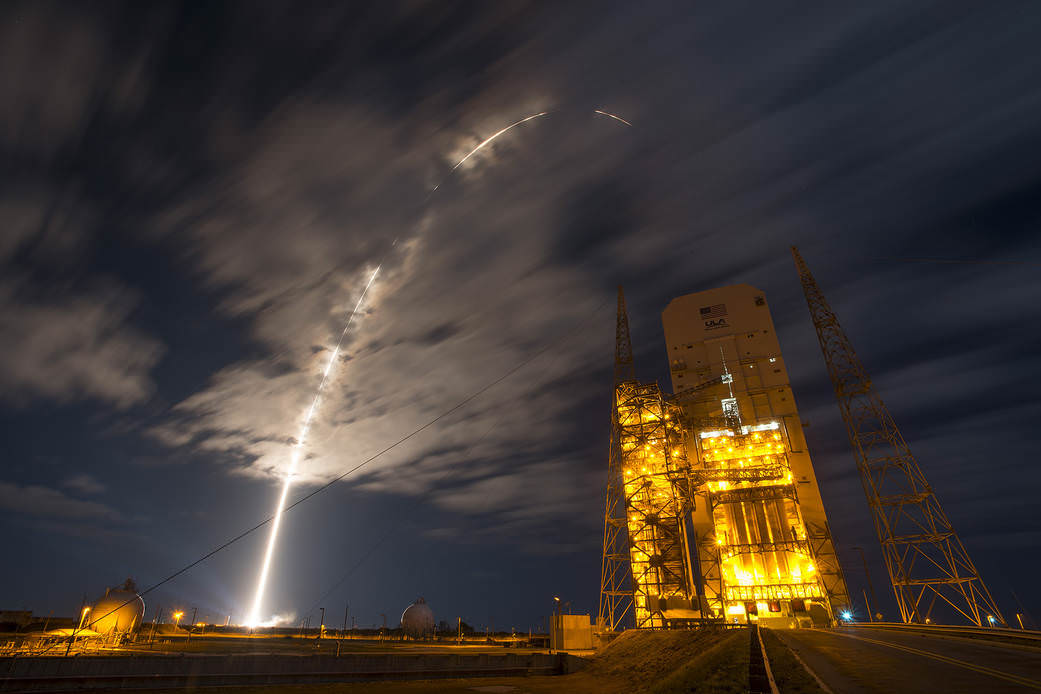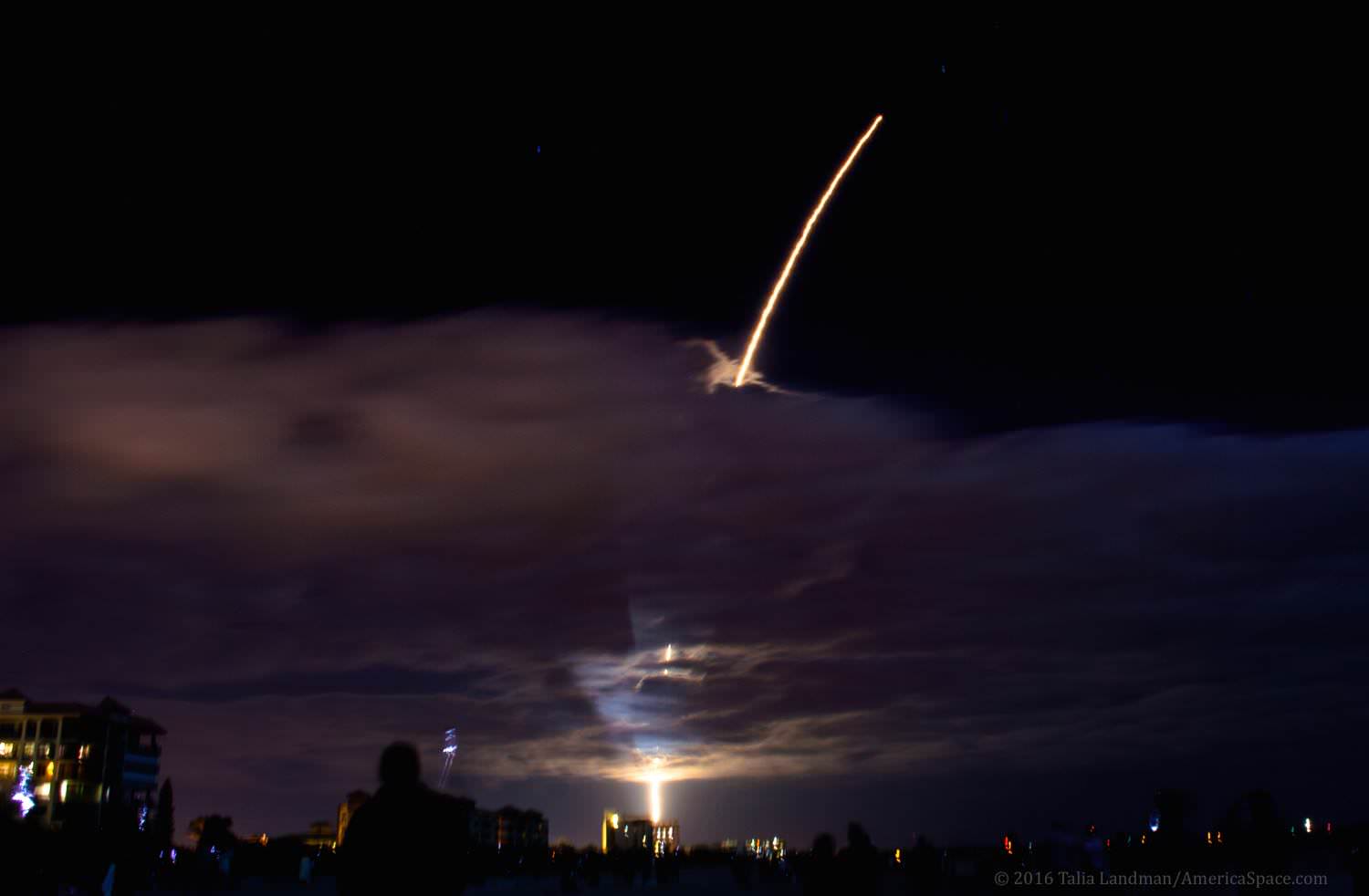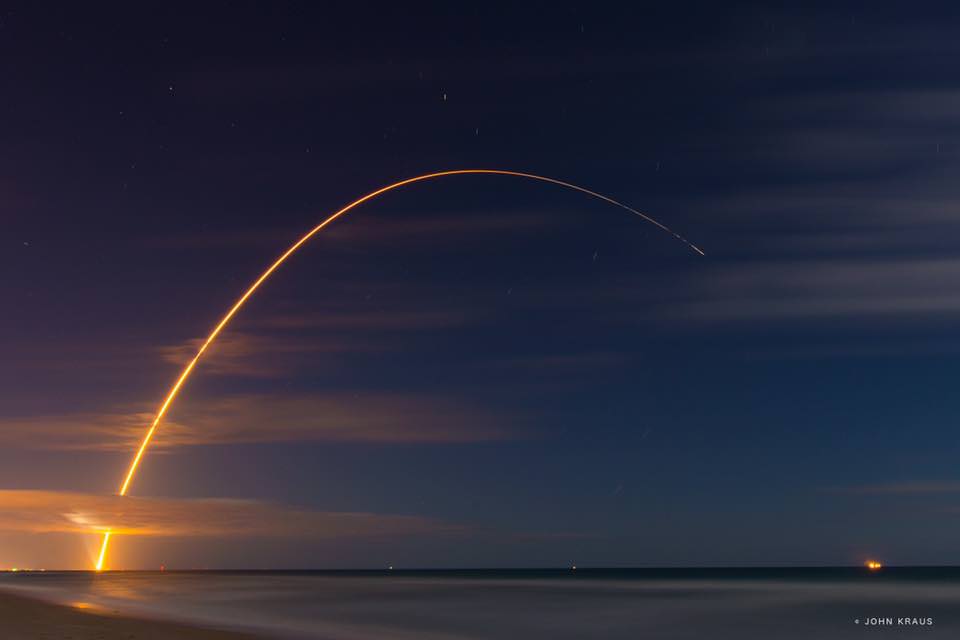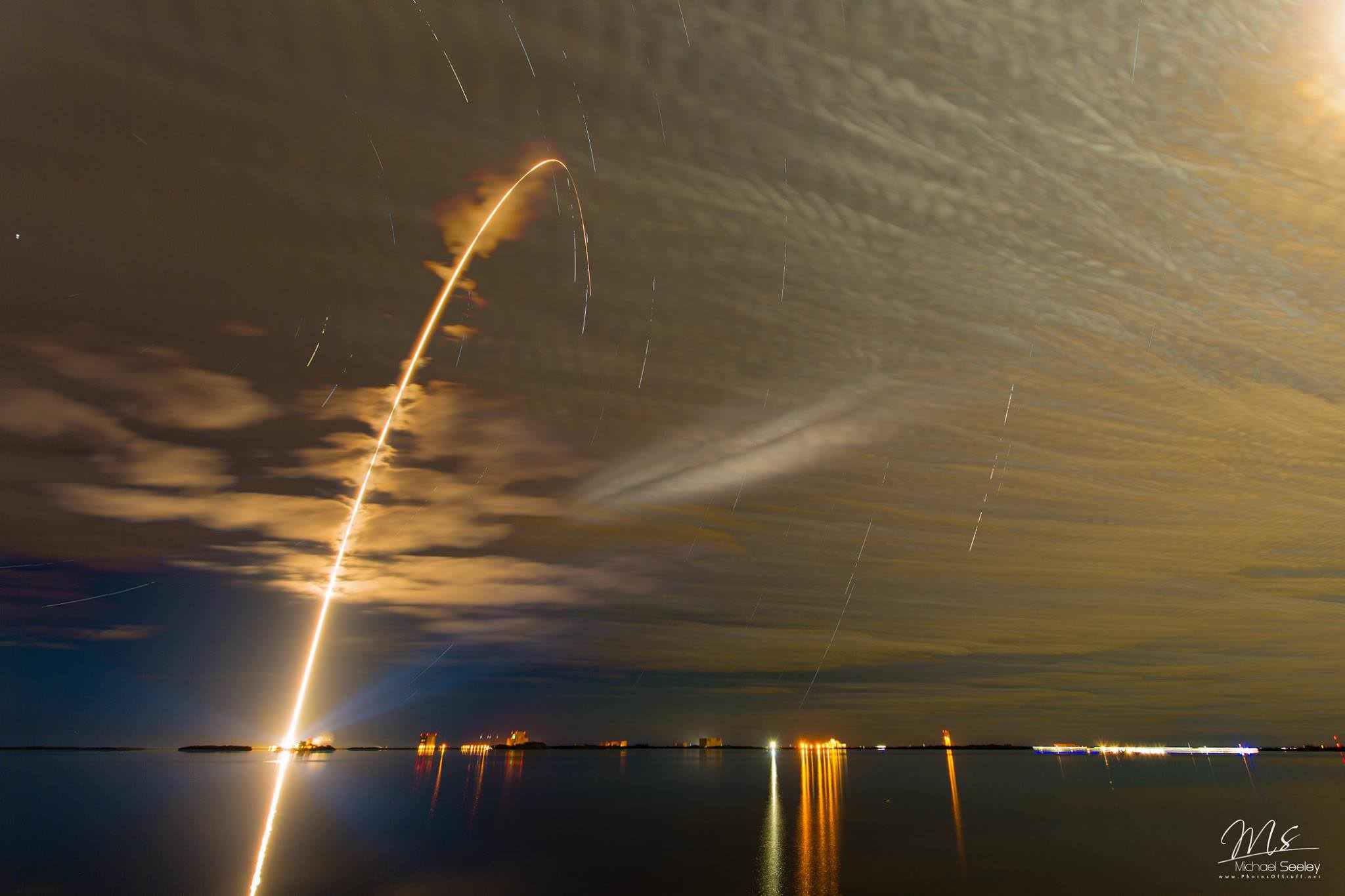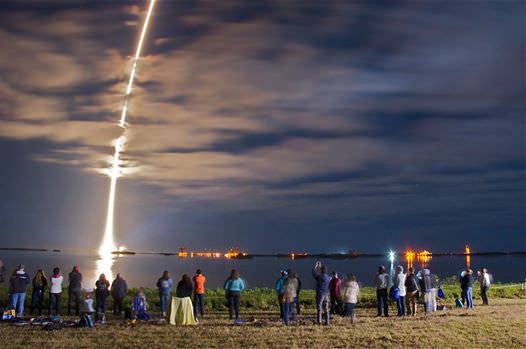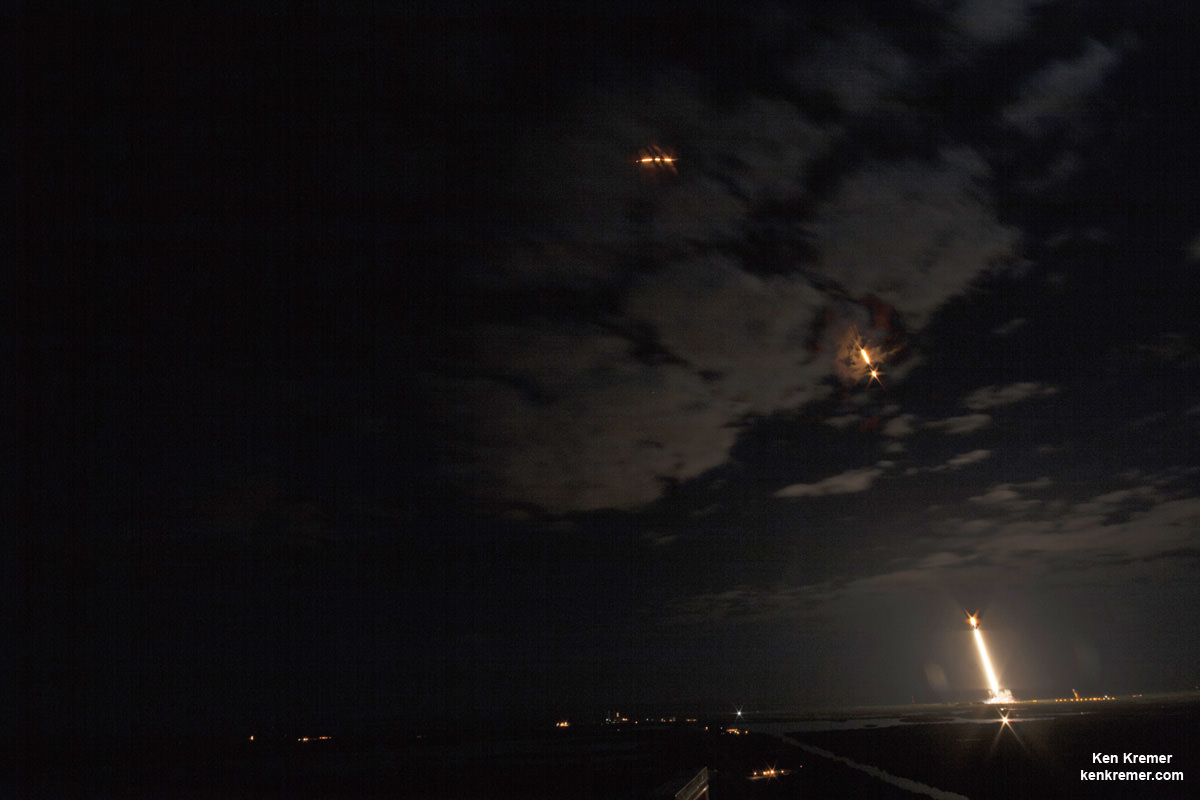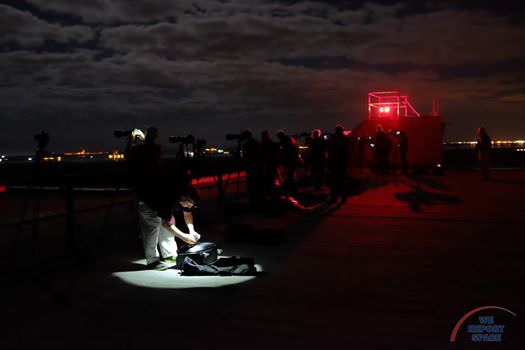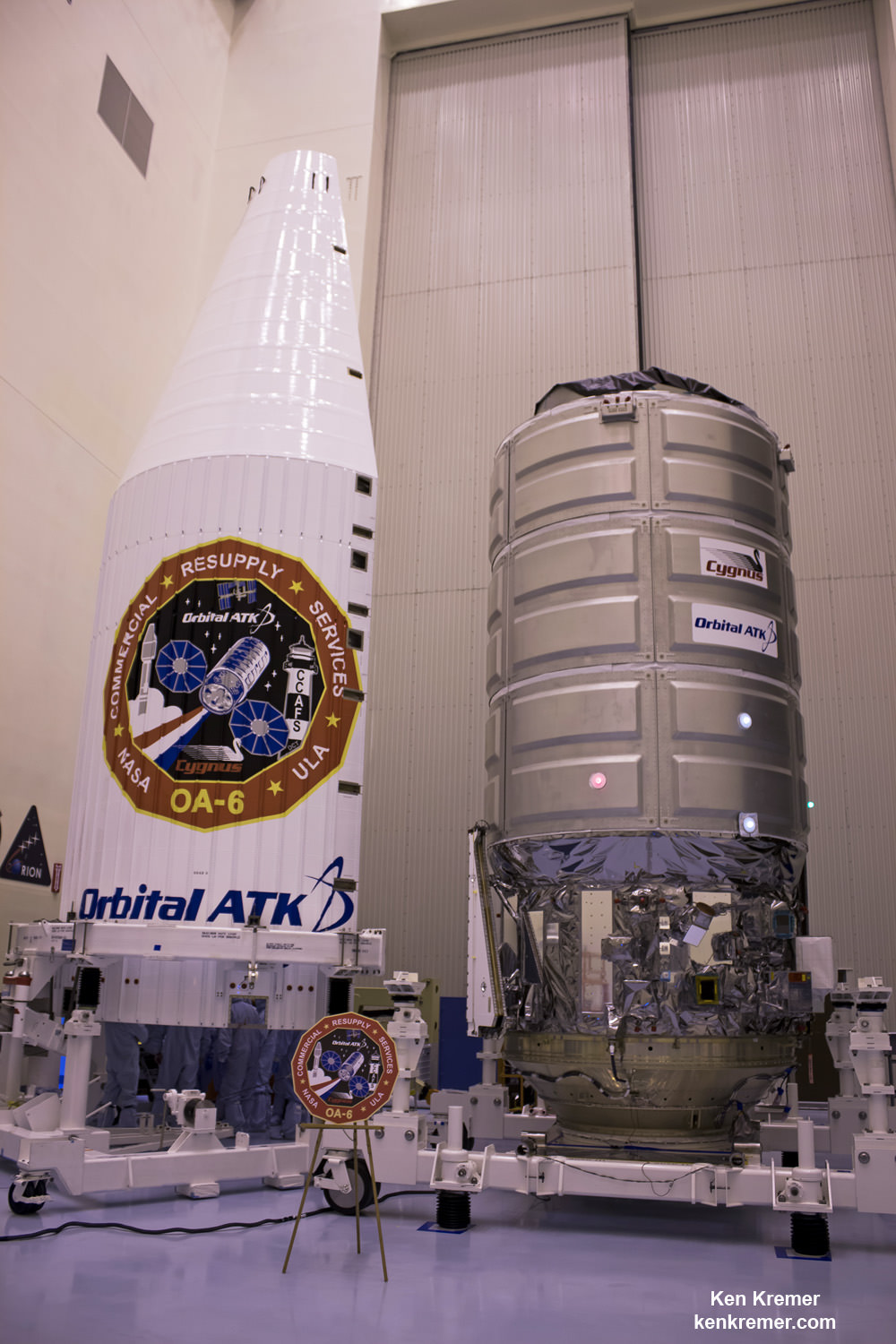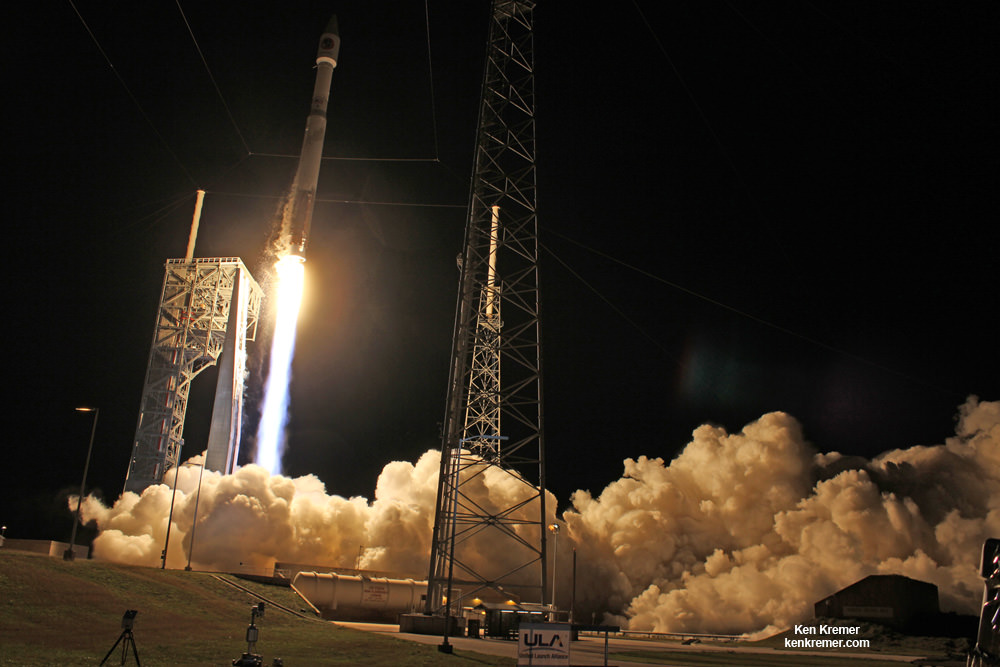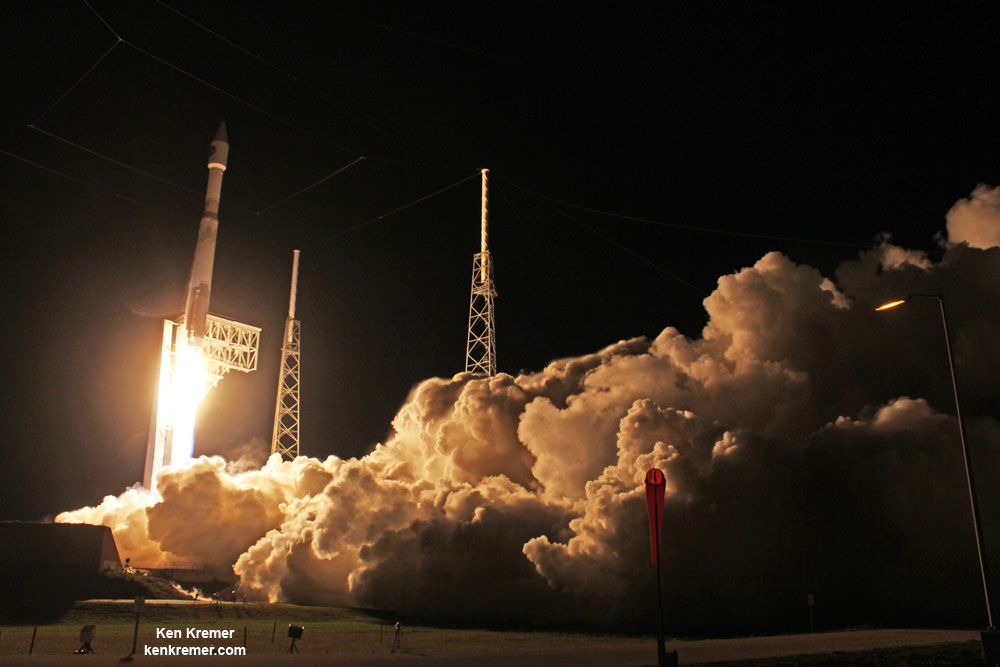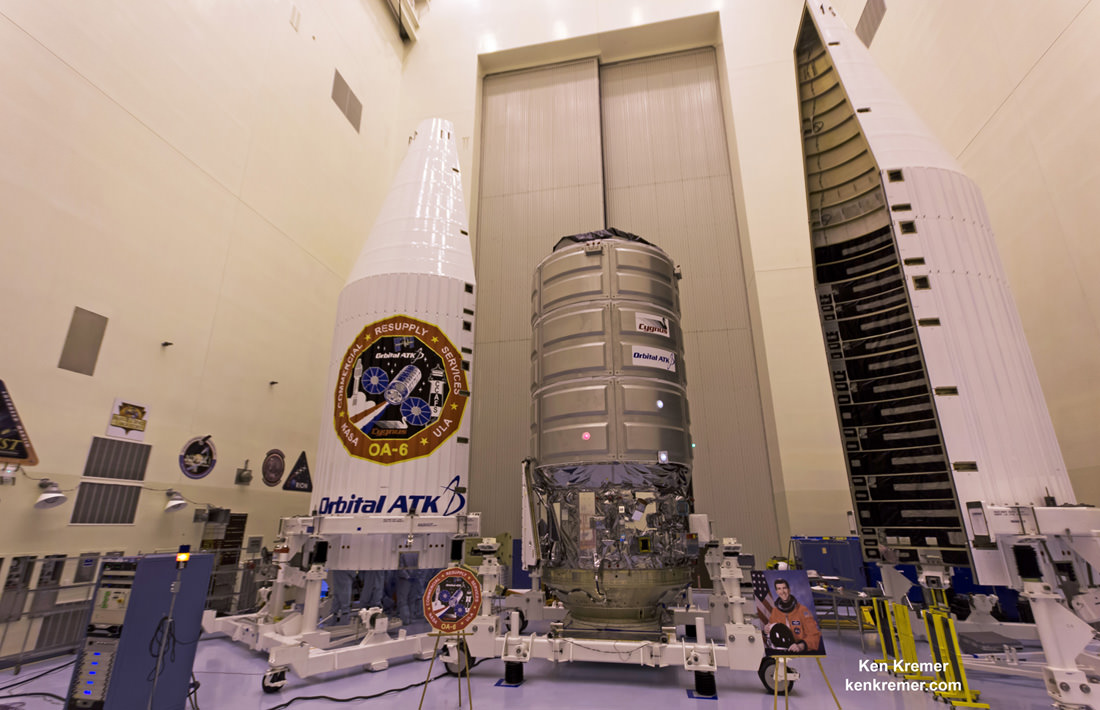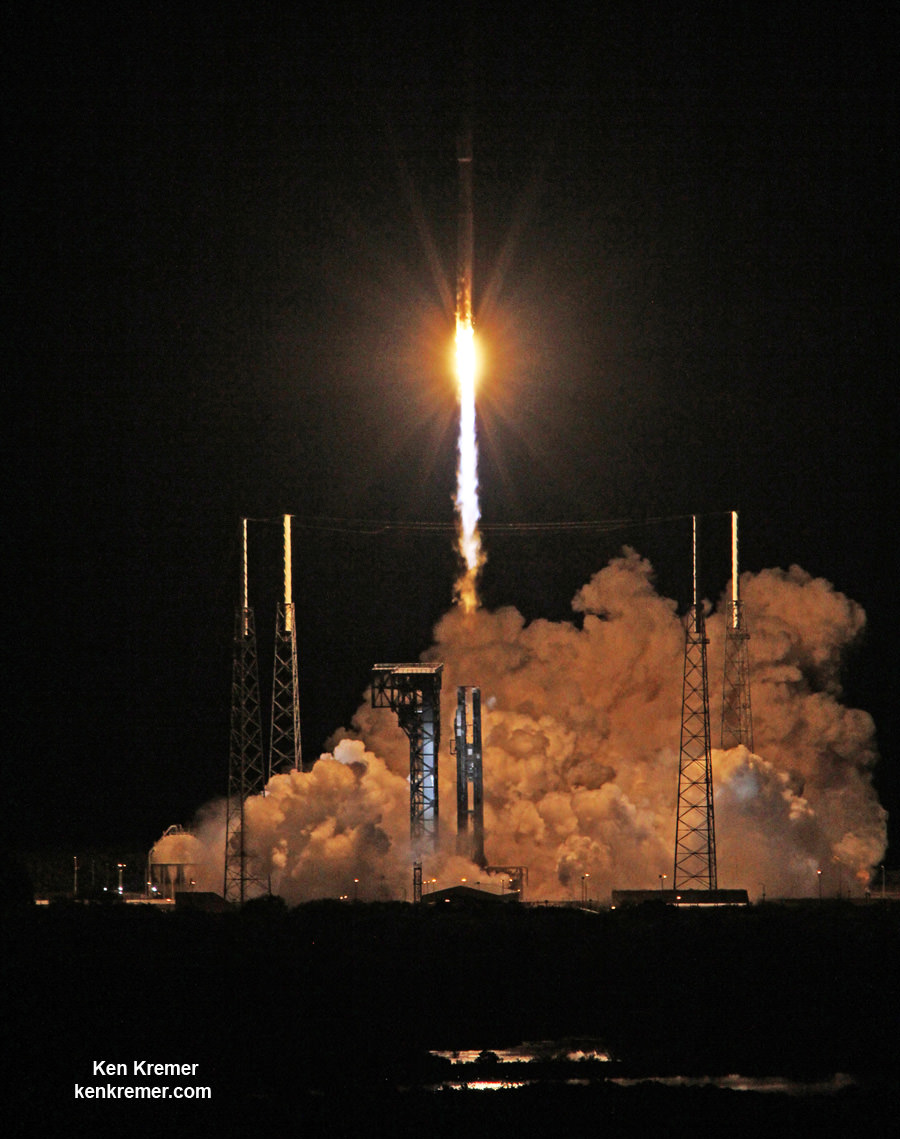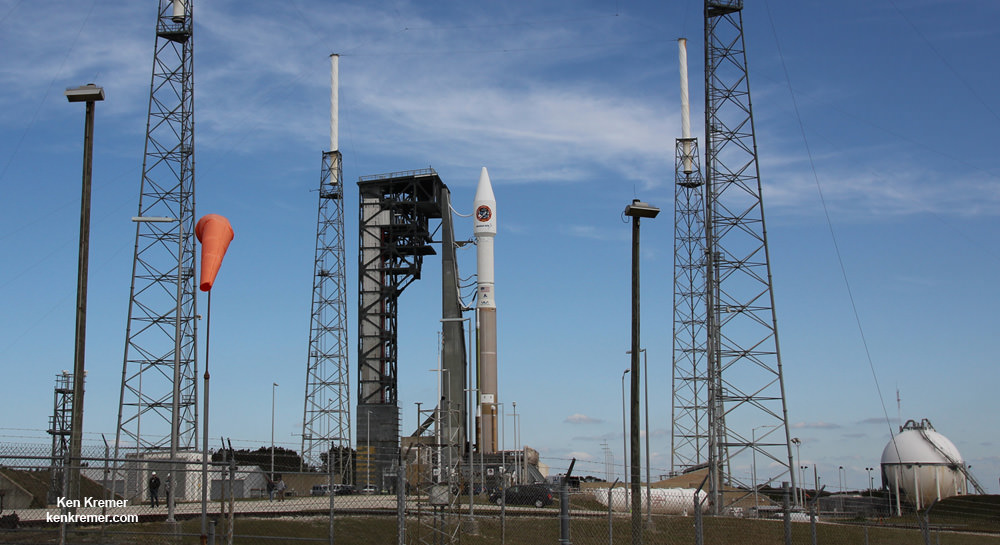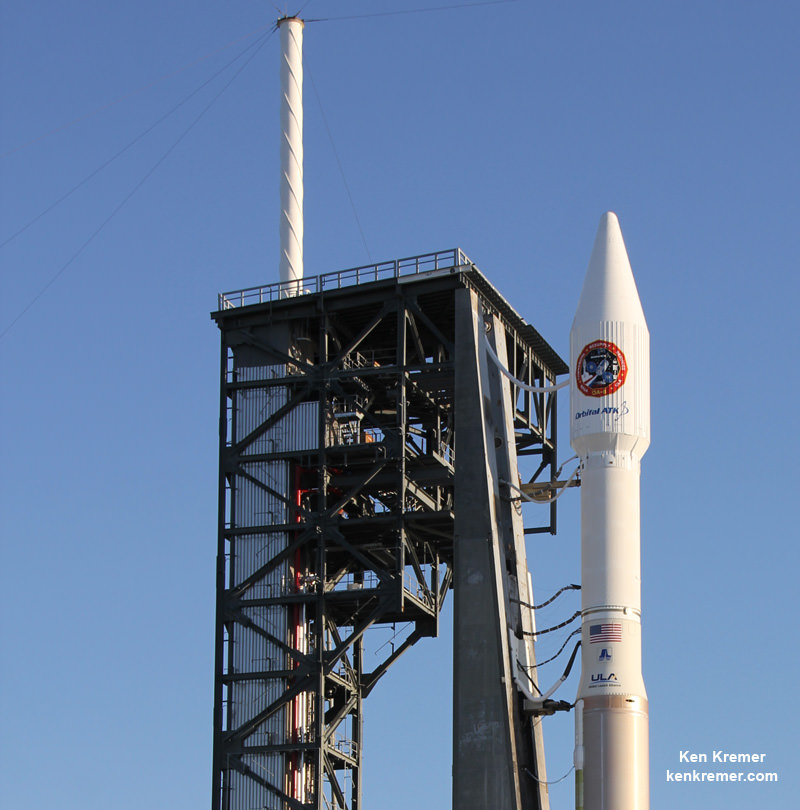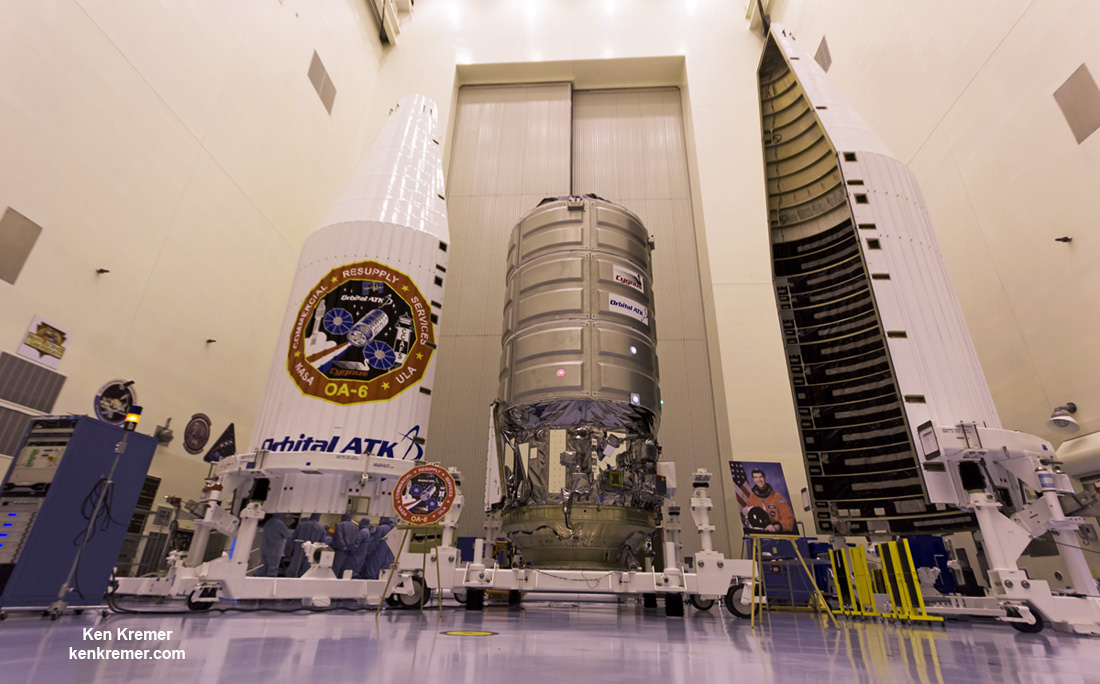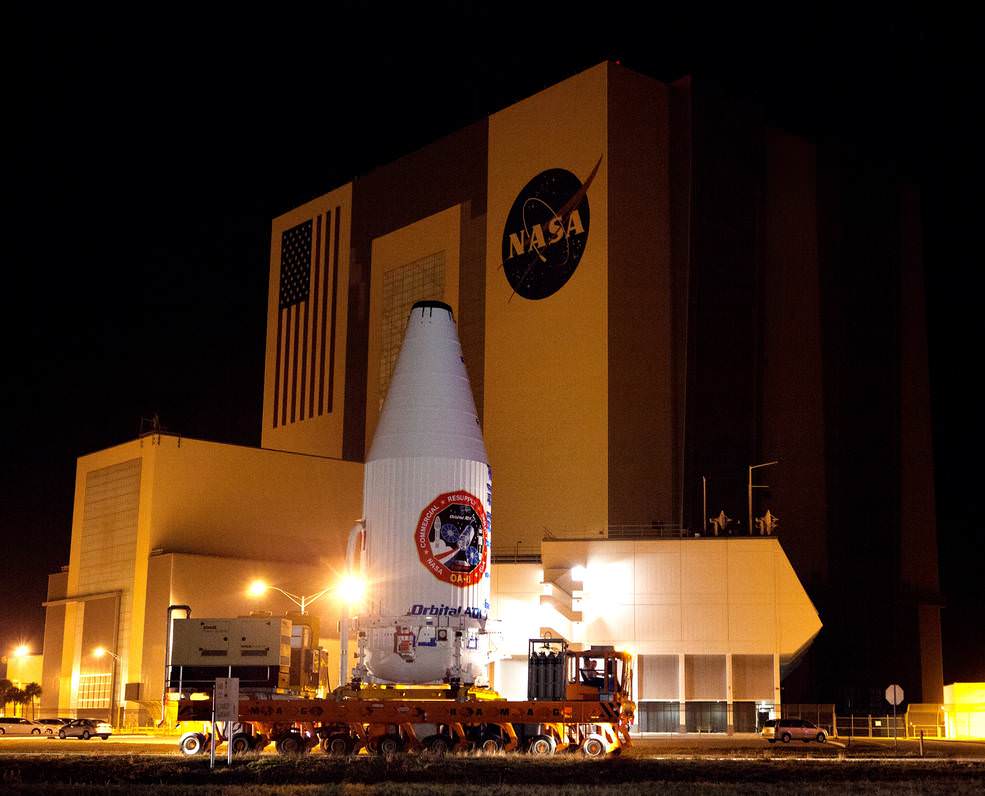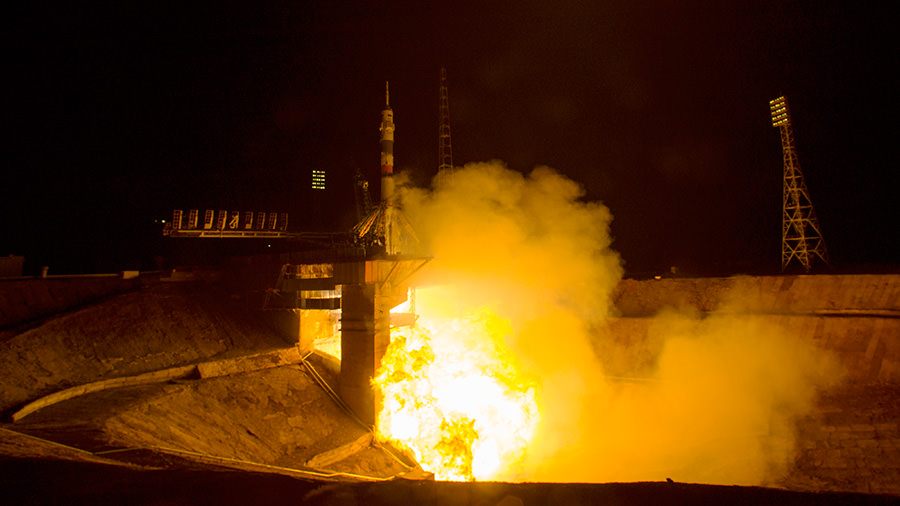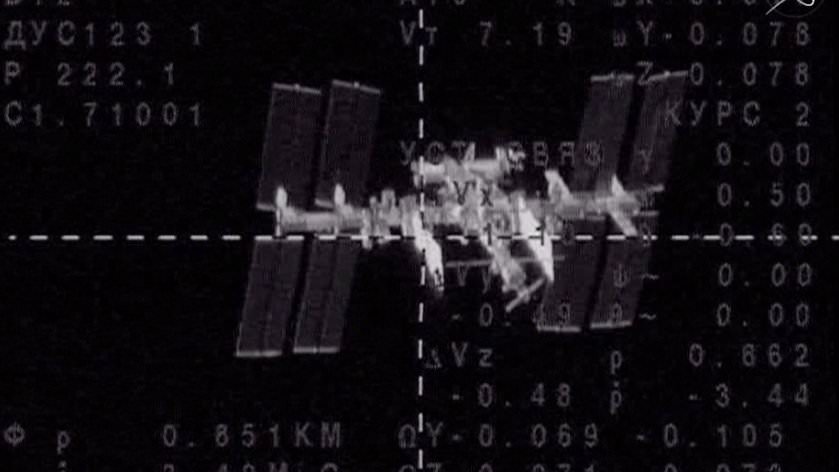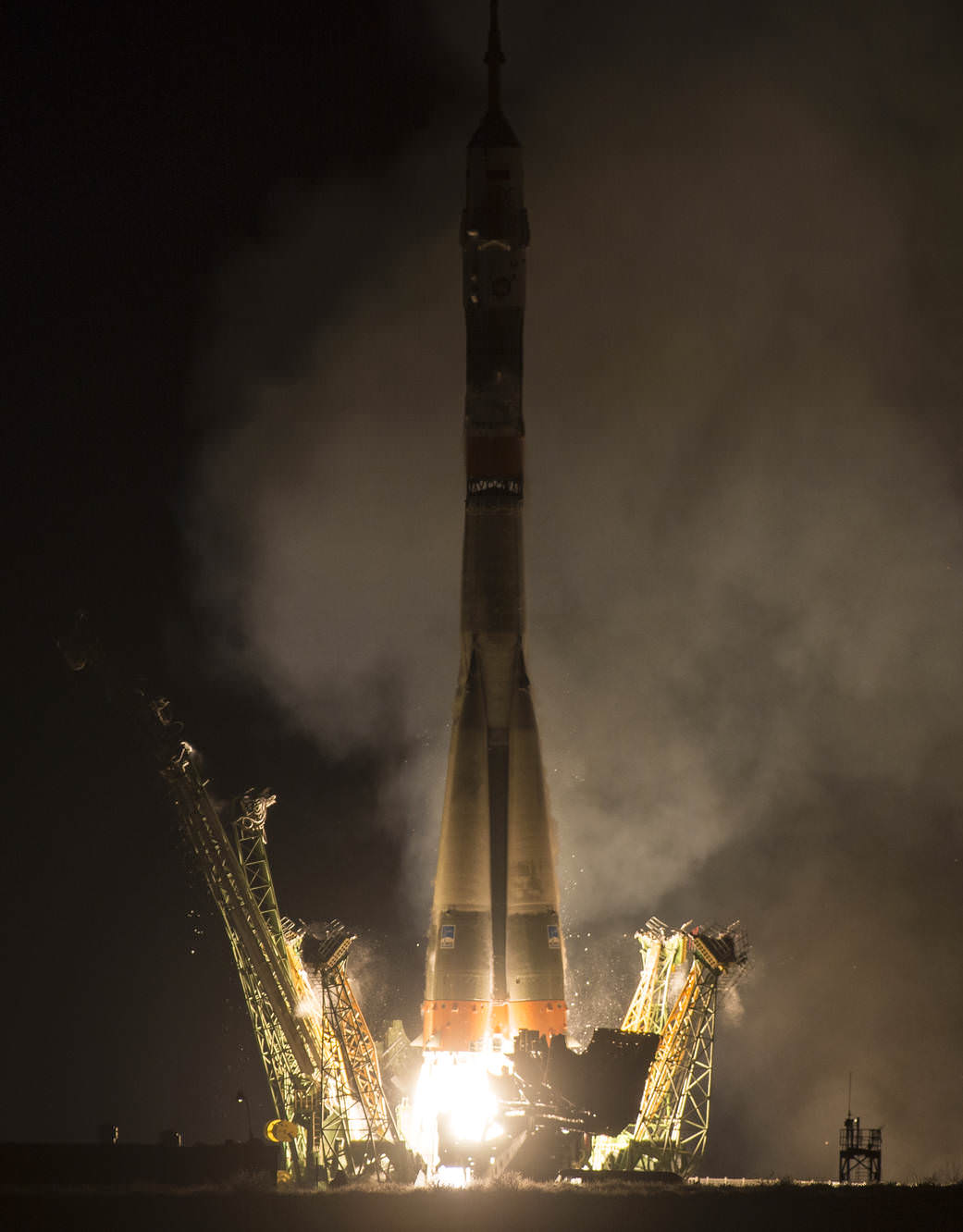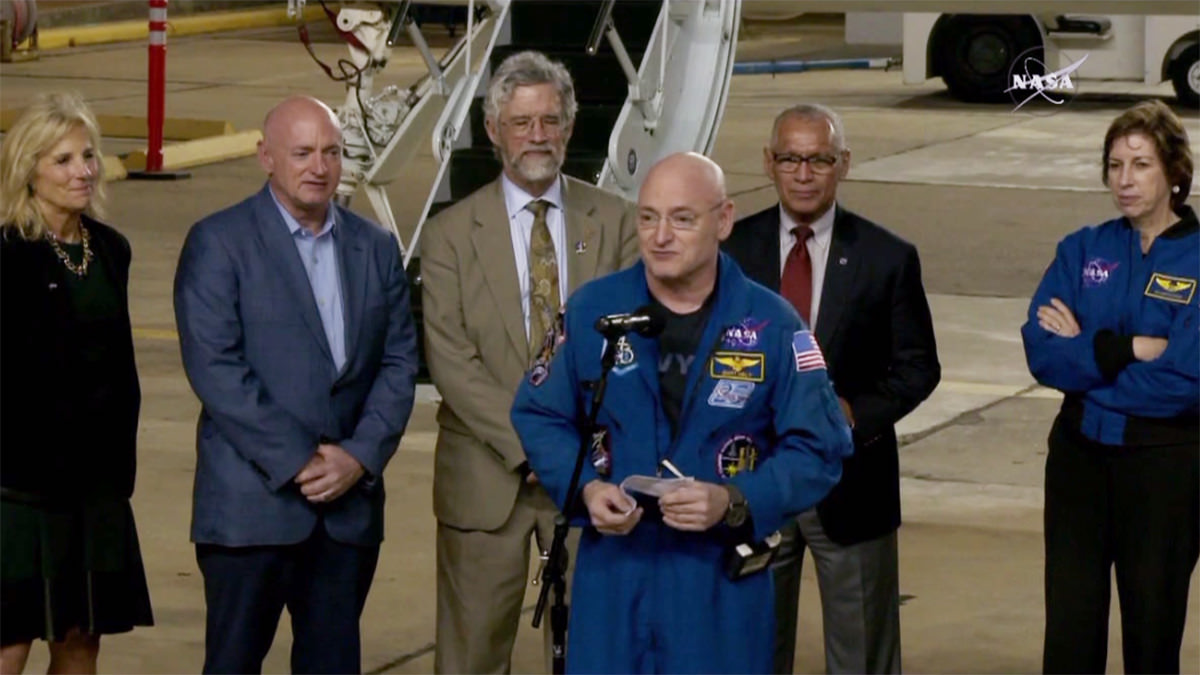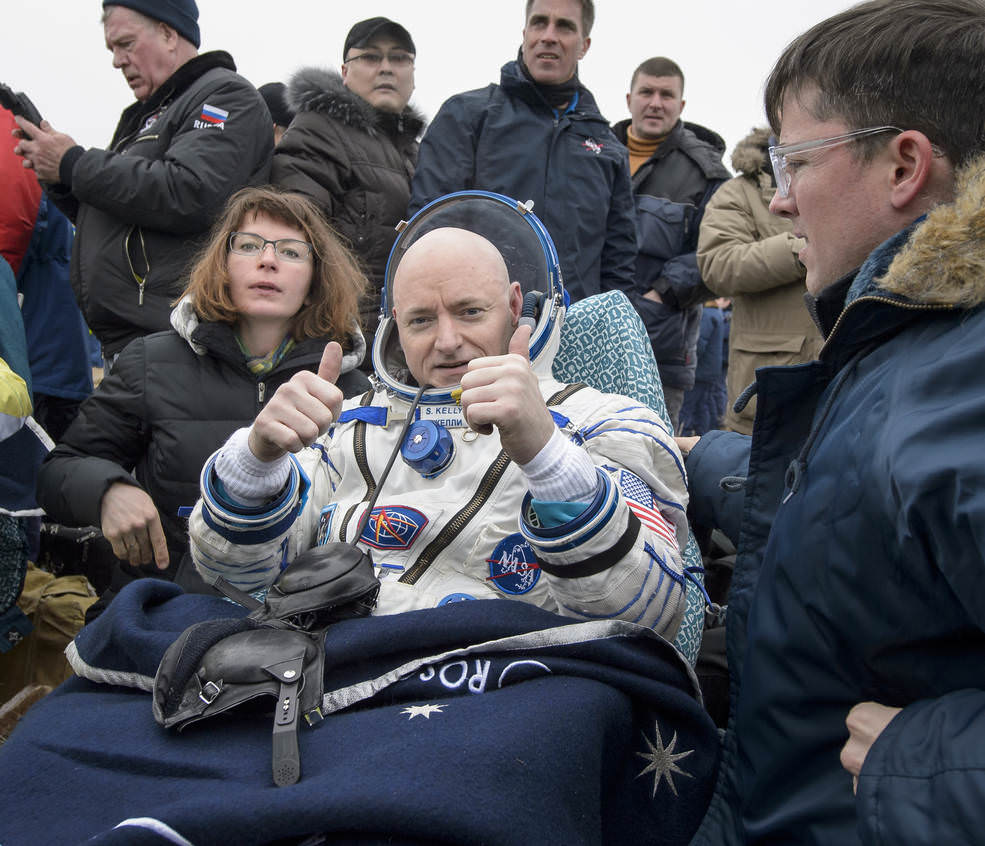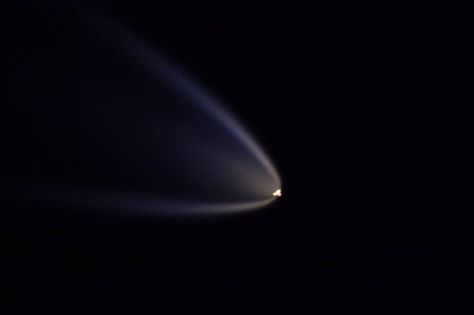
An unmanned Russian space freighter hauling fresh fruit and over three tons of food, water, supplies and science experiments blasted off today, Thursday, March 31, from the Baikonur Cosmodrome in Kazakhstan, commencing a two-day orbital trek to the six person crew living aboard the International Space Station (ISS).
The successful nighttime liftoff of the Progress 63 cargo ship atop a three stage Soyuz 2.1a booster took place at 12:23 p.m. EDT (10:23 p.m. local time in Baikonur) from Site 31 at Baikonur as the orbiting outpost was flying about 251 miles (400 km) above northeast Iraq.
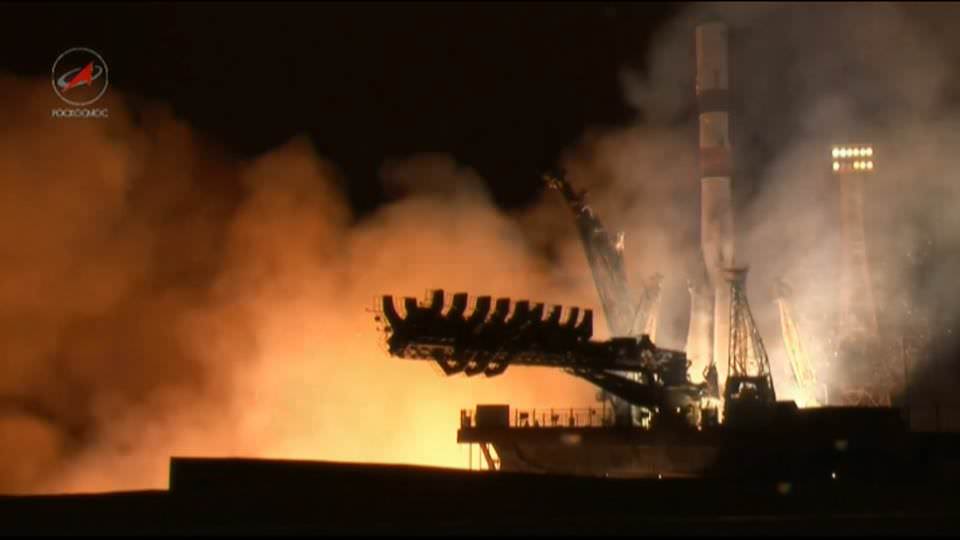
NASA astronaut and Expedition 47 crew member Jeff Williams captured several elegant views of the Progress launch from his heavenly perch on the station inside the Cupola.
“Fresh fruit is on the way! Here are some of the best pics taken from @Space_Station during today’s #Progress launch,” Williams said on his social media accounts from space.
“Today’s #Progress launch occurred about 5 minutes before we passed over the launch site in Baikonur.”
“Sunset occurred for us about a minute later and shortly after we caught site of the rocket ahead and below us from the Cupola. We continued to catch up to it until it was directly below. We saw the flash of 3rd stage ignition and the subsequent 3rd stage was spectacular. Here are some of the best shots taken from the International Space Station. (note the one taken just after the moment of engine cutoff!) Spectacular!” Williams elaborated.
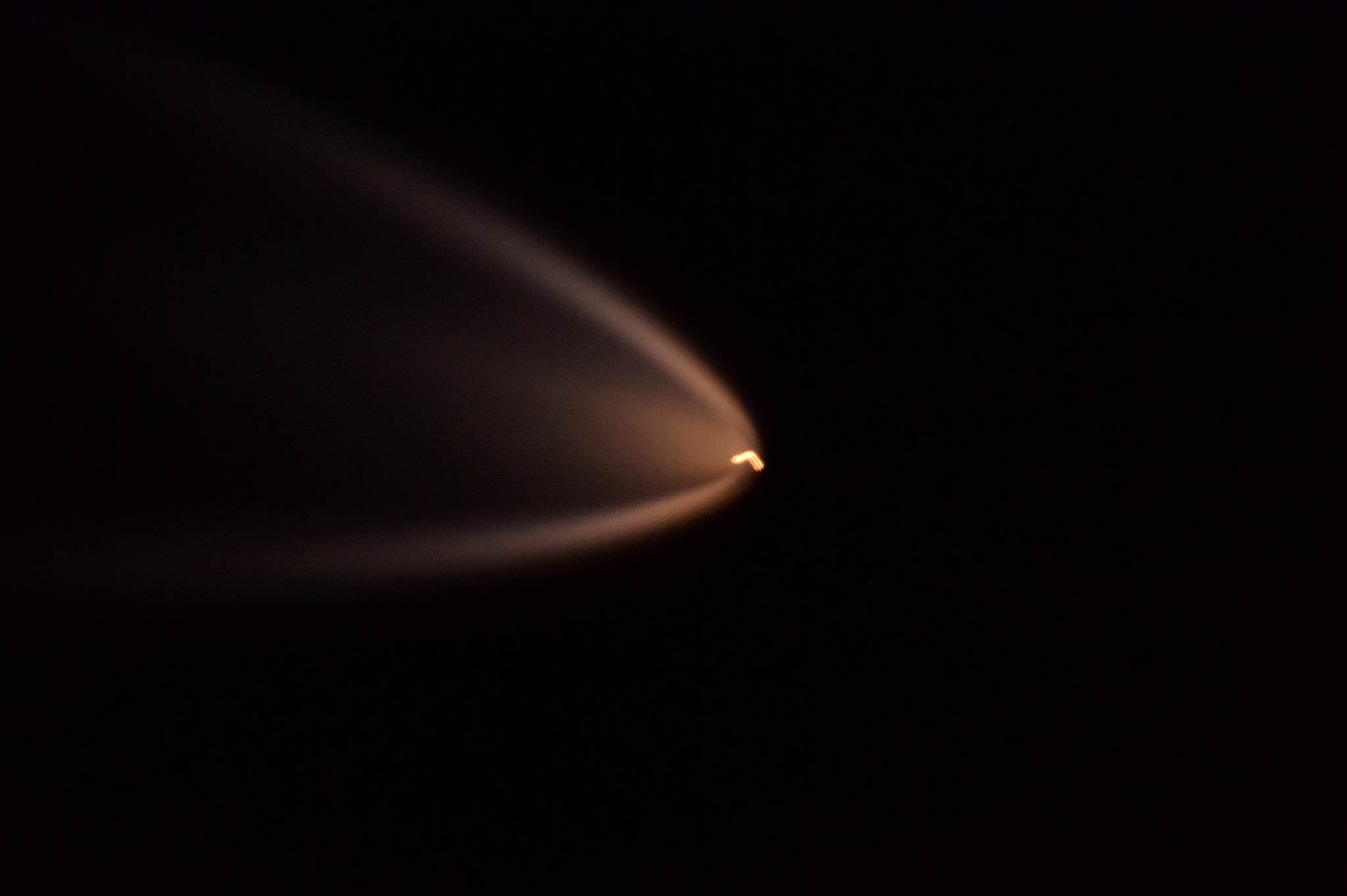
The Progress 63 resupply ship, also known by its Russian acronym as Progress MS-02, is due to arrive at the station on April 2 for an automated docking to the aft port of the Russian Zvezda Service Module.
After a picture perfect eight and a half minute climb to its initial orbit, the Progress MS-02 separated from the Soyuz third stage and deployed its pair of solar arrays and navigational antennas as planned.
“This was a flawless ascent to orbit for the Progress 63 cargo craft carrying just over three tons of supplies,” said NASA launch commentator Rob Navius during a live launch webcast on NASA TV. “Everything was right on the money.”
“All stages of the Soyuz booster performed to perfection.”
The planned longer two-day and 34 orbit journey rather than a faster 3 or 4 orbit rendezvous and docking is designed to help engineers test out new computer software and vehicle communications gear on this new version of the Progress.
“The two-day rendezvous for the Progress is deliberately planned to enable Russian flight controllers to test new software and communications equipment for the new vehicle configuration that will be standard for future Progress and piloted Soyuz spacecraft,” according to NASA officials.
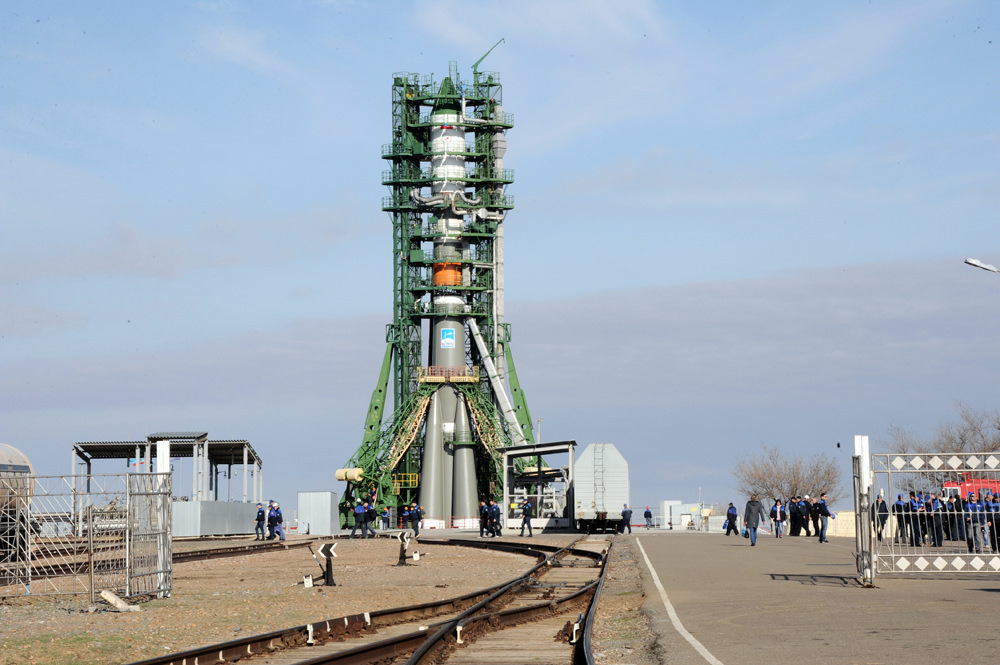
Docking to the orbiting laboratory is set for approximately 2 p.m. Saturday, April 2.
NASA TV will provide live docking coverage of the Progress 63 arrival starting at 1:15 p.m. on Saturday.
Today’s Progress launch counts as the second of a constellation of three resupply ships from the US and Russia launching to the station over a three successive weeks.
The Orbital ATK ‘SS Rick Husband’ Cygnus resupply spacecraft that launched last week on Tuesday, March 22, 2016 was at the vanguard of the cargo ship trio – as I reported here from on site at the Kennedy Space Center in Florida.
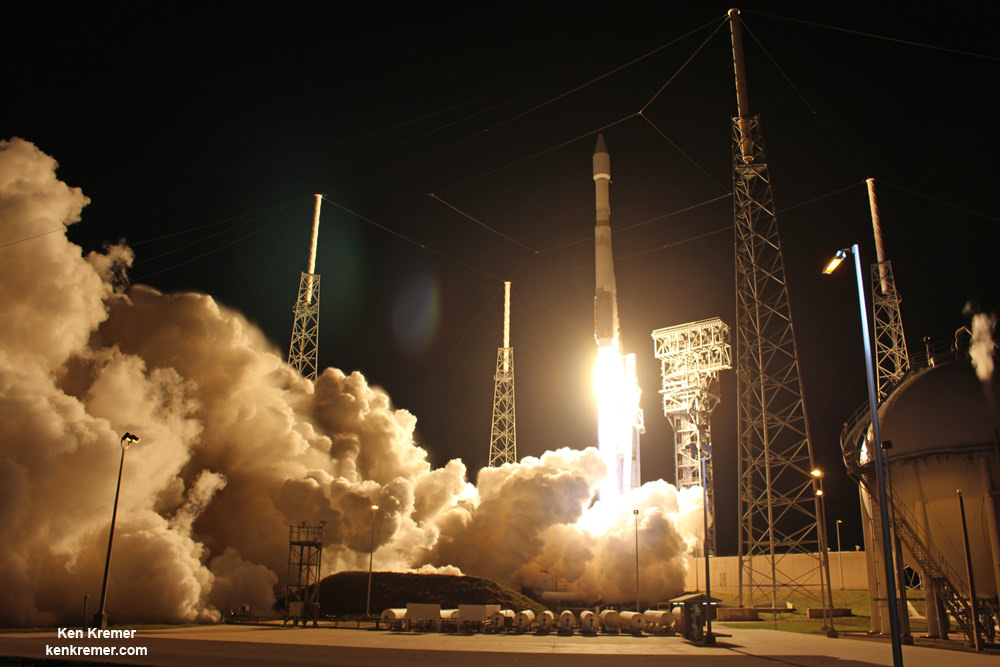
Cygnus was successfully berthed at the Earth-facing port of the Unity module this past Saturday, March 26 – as I reported here.
Following Progress is the SpaceX Return To Flight (RTF) mission dubbed SpaceX CRS-8.
It is slated to launch on April 8 and arrive at the ISS on April 10 for berthing to the Earth-facing port of the Harmony module – at the end of the station where NASA space shuttles formerly docked. It carries another 3.5 tons of supplies.
So altogether the trio of international cargo ships will supply over 12 tons of station supplies in rapid succession over the next 3 weeks.
This choreography will set up America’s Cygnus and Dragon resupply craft to simultaneously be present and reside attached at adjacent ports on the ISS for the first time in history.
Plans currently call for Cygnus to stay at station for approximately two months until May 20th., when it will be unbolted and unberthed for eventual deorbiting and reentry.
Progress 63 will remain at the station for six months.
Stay tuned here for Ken’s continuing Earth and planetary science and human spaceflight news.
………….
Learn more about Orion, SLS, ISS, NASA Mars rovers, Orbital ATK, ULA, SpaceX, Boeing, Space Taxis, NASA missions and more at Ken’s upcoming outreach events:
Apr 9/10: “NASA and the Road to Mars Human Spaceflight programs” and “Curiosity explores Mars” at NEAF (NorthEast Astronomy and Space Forum), 9 AM to 5 PM, Suffern, NY, Rockland Community College and Rockland Astronomy Club – http://rocklandastronomy.com/neaf.html
Apr 12: Hosting Dr. Jim Green, NASA, Director Planetary Science, for a Planetary sciences talk about “Ceres, Pluto and Planet X” at Princeton University; 7:30 PM, Amateur Astronomers Assoc of Princeton, Peyton Hall, Princeton, NJ – http://www.princetonastronomy.org/
Apr 17: “NASA and the Road to Mars Human Spaceflight programs”- 1:30 PM at Washington Crossing State Park, Nature Center, Titusville, NJ – http://www.state.nj.us/dep/parksandforests/parks/washcros.html


